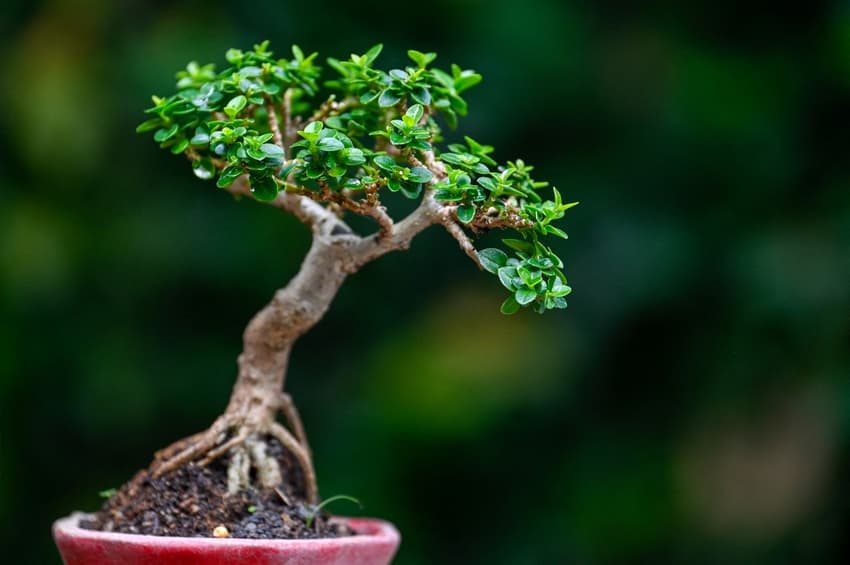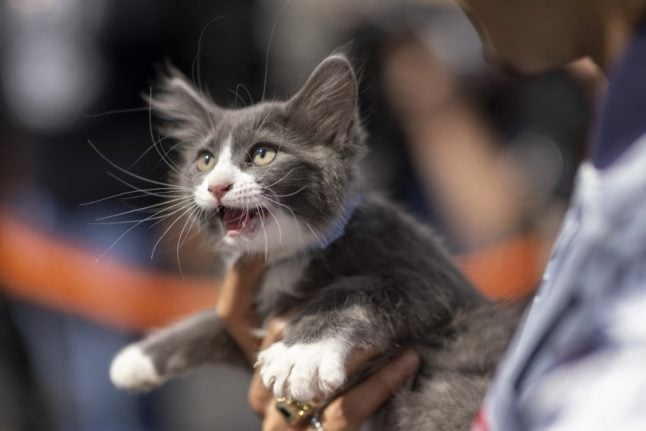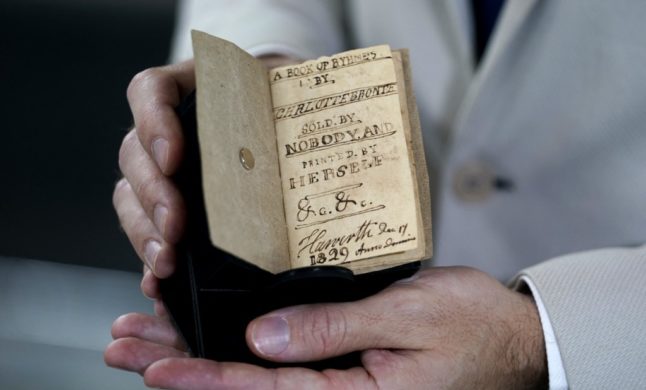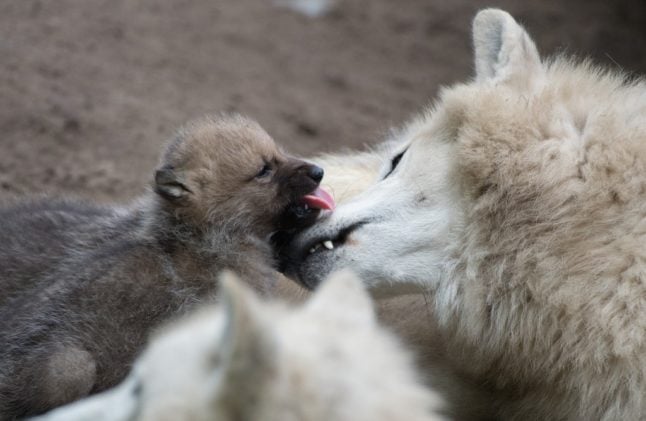Etto, ino, ello: How to make Italian words smaller

Italian grammar is notoriously difficult and diminutive suffixes are no exception. Here’s what you need to know about ‘shrinking’ Italian words.
Diminutives are generally used to refer to a smaller (or, at times, cuter) version of a person, animal or object.
But, while diminutives are fairly straightforward in English – the most common diminutives are formed with the prefix mini- or with suffixes -let and -y – things are far trickier in Italian.
QUIZ: Test your Italian language level on the A1 to C2 scale
Italian has ten different diminutive suffixes and there are no precise grammatical rules regulating their use, meaning that there’s only one real way to know which ones to use and that is by picking them up as you go along.
On top of that, suffixes for certain words might vary from region to region. For instance, a northern speaker would probably use freschino as the diminutive of fresco (chill), whereas a southern speaker would likely use freschetto.
But, amid a maelstrom of grammatical uncertainty, the good news is that most Italian words take only one of the following three diminutive suffixes: -ino, -etto and -ello.

A slightly upset 'gattino' (kitten). Photo by David MCNEW / AFP
But, amid a maelstrom of grammatical uncertainty, the good news is that most Italian words take only one of the following three diminutive suffixes: -ino, -etto and -ello.
Ino is by far the most popular of the three and, like all other Italian suffixes, must be adequately declined based on the gender and number of the item it refers to:
Il gatto → il gattino – (male, singular)
The cat → the kitten
La ragazza → la ragazzina – (female, singular)
The girl → the little girl
Piedi → Piedini – (male, plural)
Feet → Little feet
Perle → perline – (female, plural)
Pearls → small pearls
Ino can sometimes be preceded by -ol or -ic. These interfixes only serve a phonetic purpose as they make the words they are used with sound more natural.
Un sasso → un sassolino
A stone → a small stone
Un libro → un libricino
A book → a little book
READ ALSO: 'I'm not Onassis': Seven things Italian dads say and what they mean

Most Italians would describe the above book as a 'libricino'. Photo by Timothy A. CLARY / AFP
Etto is the second-most popular diminutive suffix in Italy and is mostly used for feminine words, though it can also take some masculine ones.
Una scarpa → una scarpetta
A shoe → a little shoe
Una casa → una casetta
A house → a small house
Un bacio → un bacetto
A kiss → a little kiss
Finally, the suffix -ello is the least popular of the three, though some speakers, especially in the south of the country, use it quite frequently. Like -ino, -ello is sometimes preceded by the interfix -ic.
Un albero → un alberello
A tree → a little tree
Un asino → un asinello
A donkey → a little donkey
Un campo → un campicello
A field → a little field
Other suffixes
Besides the main suffixes (-ino, -etto, -ello), Italian has seven other diminutive suffixes, which are however all fairly rare.
The suffix -otto is used for some types of birds (e.g., passerotto, ‘little sparrow’, or aquilotto, ‘baby eagle’), whereas -acchiotto is mainly used for wolf and bear pups (lupacchiotto and orsacchiotto).

A wolf pup is a 'lupacchiotto' in Italian. Photo by Johannes EISELE / AFP
Uccio can express endearment towards the item it refers to, as in calduccio (‘a pleasant warmth’), but it can also have a derogative meaning. For instance, an affaruccio is a poor little deal.
Ucolo, -icchio and -iciattolo all have a pejorative connotation and each one of them is only used with a handful of words.
Un governo → un governicchio
A government → a puny little government
Il fiume → il fiumiciattolo
The river → the ugly little river
Finally, -icciolo is mostly used with porto (harbour) and festa (party), resulting in porticciolo and festicciola respectively.
Double-suffix words
Though we might never understand why, Italian speakers like to overcomplicate the language, which is why you’ll sometimes encounter words carrying not one but two suffixes.
And, while these words may not be very popular in conversations between adults, they are fairly common in baby talk.
REVEALED: These are Italy's most popular baby names
For instance, an Italian parent might ask their child to take a passettino (a very small passo, or step) or make a saltellino (a very small salto, or jump), with both words combining two different suffixes: -etto plus -ino, and -ello plus -ino.
Other common double-suffix words are: fiorellino (very small flower), stanzettina (very small room), pranzettino (nice little lunch) and quadrettino (very small painting).
Comments
See Also
Diminutives are generally used to refer to a smaller (or, at times, cuter) version of a person, animal or object.
But, while diminutives are fairly straightforward in English – the most common diminutives are formed with the prefix mini- or with suffixes -let and -y – things are far trickier in Italian.
QUIZ: Test your Italian language level on the A1 to C2 scale
Italian has ten different diminutive suffixes and there are no precise grammatical rules regulating their use, meaning that there’s only one real way to know which ones to use and that is by picking them up as you go along.
On top of that, suffixes for certain words might vary from region to region. For instance, a northern speaker would probably use freschino as the diminutive of fresco (chill), whereas a southern speaker would likely use freschetto.
But, amid a maelstrom of grammatical uncertainty, the good news is that most Italian words take only one of the following three diminutive suffixes: -ino, -etto and -ello.

But, amid a maelstrom of grammatical uncertainty, the good news is that most Italian words take only one of the following three diminutive suffixes: -ino, -etto and -ello.
Ino is by far the most popular of the three and, like all other Italian suffixes, must be adequately declined based on the gender and number of the item it refers to:
Il gatto → il gattino – (male, singular)
The cat → the kitten
La ragazza → la ragazzina – (female, singular)
The girl → the little girl
Piedi → Piedini – (male, plural)
Feet → Little feet
Perle → perline – (female, plural)
Pearls → small pearls
Ino can sometimes be preceded by -ol or -ic. These interfixes only serve a phonetic purpose as they make the words they are used with sound more natural.
Un sasso → un sassolino
A stone → a small stone
Un libro → un libricino
A book → a little book
READ ALSO: 'I'm not Onassis': Seven things Italian dads say and what they mean

Etto is the second-most popular diminutive suffix in Italy and is mostly used for feminine words, though it can also take some masculine ones.
Una scarpa → una scarpetta
A shoe → a little shoe
Una casa → una casetta
A house → a small house
Un bacio → un bacetto
A kiss → a little kiss
Finally, the suffix -ello is the least popular of the three, though some speakers, especially in the south of the country, use it quite frequently. Like -ino, -ello is sometimes preceded by the interfix -ic.
Un albero → un alberello
A tree → a little tree
Un asino → un asinello
A donkey → a little donkey
Un campo → un campicello
A field → a little field
Other suffixes
Besides the main suffixes (-ino, -etto, -ello), Italian has seven other diminutive suffixes, which are however all fairly rare.
The suffix -otto is used for some types of birds (e.g., passerotto, ‘little sparrow’, or aquilotto, ‘baby eagle’), whereas -acchiotto is mainly used for wolf and bear pups (lupacchiotto and orsacchiotto).

Uccio can express endearment towards the item it refers to, as in calduccio (‘a pleasant warmth’), but it can also have a derogative meaning. For instance, an affaruccio is a poor little deal.
Ucolo, -icchio and -iciattolo all have a pejorative connotation and each one of them is only used with a handful of words.
Un governo → un governicchio
A government → a puny little government
Il fiume → il fiumiciattolo
The river → the ugly little river
Finally, -icciolo is mostly used with porto (harbour) and festa (party), resulting in porticciolo and festicciola respectively.
Double-suffix words
Though we might never understand why, Italian speakers like to overcomplicate the language, which is why you’ll sometimes encounter words carrying not one but two suffixes.
And, while these words may not be very popular in conversations between adults, they are fairly common in baby talk.
REVEALED: These are Italy's most popular baby names
For instance, an Italian parent might ask their child to take a passettino (a very small passo, or step) or make a saltellino (a very small salto, or jump), with both words combining two different suffixes: -etto plus -ino, and -ello plus -ino.
Other common double-suffix words are: fiorellino (very small flower), stanzettina (very small room), pranzettino (nice little lunch) and quadrettino (very small painting).
Join the conversation in our comments section below. Share your own views and experience and if you have a question or suggestion for our journalists then email us at [email protected].
Please keep comments civil, constructive and on topic – and make sure to read our terms of use before getting involved.
Please log in here to leave a comment.